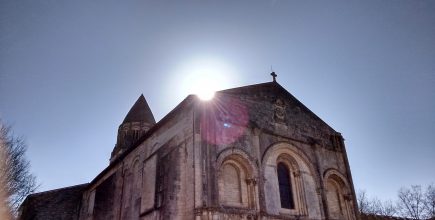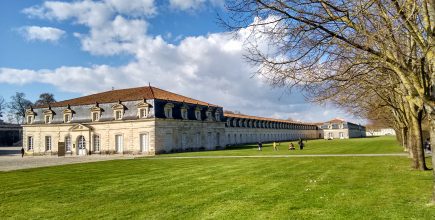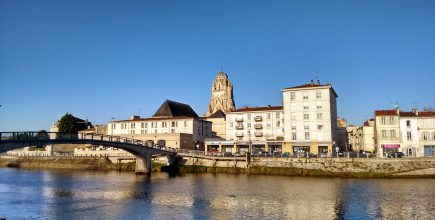01 Arrival
La Rochelle airport is a short drive away. Each town has a railway station.
Charente-Maritime, out on the Atlantic Coast, is one of the best of France’s off-the-beaten-track departments, if you want a change from its better-known corners.
Rochefort and Saintes are a 30 minute motorway drive apart. They are two of the many small French towns people may think they have no particular reason to visit. They should think again.
The writer explores the towns on the beautiful Charente river, and finds a begonia bonanza, Napoleon’s last lodgings, and the arch that Prosper moved.
02 What to see and do
Moving story
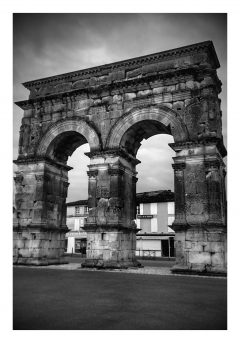
What is the second most worthwhile thing Prosper Mérimée did, after writing the novella Carmen, the story Bizet’s opera is based on? He saved the Arch of Germanicus, on the quayside in Saintes. Built in 19AD at the end of the Lyon to Saintes Roman road, it stood in the way of some weird 1843 definition of progress. The demolition men would have done for it had not Prosper, who was a government archaeology inspector, urged them to move it 50 feet to where it stands today. It is not state of the art restoration as we know it, but stand back and the slightly bodged arch, a memorial to emperor Tiberius and his adopted son Germanicus, is impressive enough.
We'll always have Rome
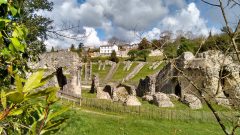
The well preserved Roman amphitheatre on the slope of the valley in Parc des Arènes – all the more impressive because I didn’t even know it existed.
Abbaye aux Dames
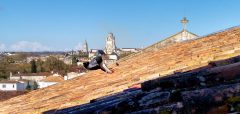
My guide and I stood for ages gazing up at the complex community of 12th Century carved figures on the Abbaye aux Dames. Then we climbed among the pigeons in the tower, for a thrilling view over the town. (I’m so sorry the pigeon my cameraphone captured is slightly out of focus.) The annual summer festival of early and classical music in the abbey funded its restoration.
Where to eat
In Rochefort there are two small family restaurants I would recommend, O’ Bistro du Sud and Les Quatre Saisons, which operates to that winning French formula: ”the chef, who is also the patron, assisted by his wife…”
In Saintes the Saveurs de l’Abbaye hotel has a good restaurant attached.
Sail serene
“The most beautiful stream in France”. That’s 16th century French King Henri IV’s view of the Charente river, curling through Western France, past ancient churches and water mills in quiet villages, to its exit half way down the Atlantic coast. Saintes is the perfect base for drowsy boat trips. Other options include a morning’s walk (or a cycle) from Saintes to the town whose name stands for a superior after-dinner drink, Cognac. There are themed walks to, and guided tours of, Hennessy and the town’s other major cognac houses. Some cognacs can be ferociously expensive. The local drink they are more likely to let you sample on market stalls is the less expensive fortified wine, Pineau des Charentes, made from white wine from local grapes.
St Eutropius
We crossed the Charente on a bridge lined with flowers, to the Basilica of St Eutropius.
Rochefort "New Town"
The town of Rochefort (30 minutes from La Rochelle Airport) was built on a grid system in the 1600s, long before the country of roads meeting at neat right angles, the USA, was even founded. I drove into one of France’s most convenient car parks, wide, welcoming – and free – just off the town centre. Rochefort is like few other places in France, a fine example of a “ville nouvelle”, or new town. French minister, Colbert commissioned it in 1665 as a place of “refuge, defence and supply” for the French Navy. It remained a naval base until 1926. In 2015 an exact replica of General Lafayette’s 18th-century ship l’Hermione, built in the town, sailed to the USA. One non-maritime attraction is the Conservatoire du Bégonia, a world-leading botanical garden specializing in begonias.
Bon Depart
After Waterloo, Napoleon fled into the far west of France with a plan to sail into retirement in the USA. He spent his last few days on placid little Aix Island (l’ile d’Aix), just beyond Rochefort, off the mouth of the Charente River. But the British Navy had the coast bottled up, and on 15 July 1815 the defeated general threw himself “upon the hospitality of the British people, the most powerful, the most constant and the most generous of my enemies”, and surrendered to Captain Maitland of the Bellerophon. There is a copy of his note in the house where he wrote it on Aix Island, now the Napoleon Museum. The place to stay (ferry from Fouras-les-Bains), is Hotel Napoleon, with its restaurant (naturally) Chez Josephine.
Helpful websites
http://www.visit-nouvelle-aquitaine.com
For more on Gareth’s accommodation, go to www.villadesdemoiselles.com and www.saveurs-abbaye.com. Saintes music festival: www.abbayeauxdames.org/festival-de-saintes
03 Where to stay
Small French towns offer interesting variations on standard hotel accommodation these days.
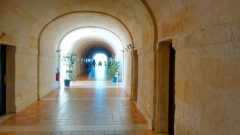
Another very cultured accommodation in this town is in the plain but elegant stone cells, once the nuns’ lodgings, in the beautifully restored Abbaye aux Dames (above) in Saintes.
In Saintes I stayed in the rambling Saveurs de l’Abbaye hotel, which has a good restaurant attached. In Rochefort I spent a night at the Villa des Demoiselles, a former grand town house, with just a few rooms, on one of the town’s 17th Century streets. There is added serenity in a private garden behind.
04 Nearby Nearby
La Rochelle is one of France’s greatest seafaring cities.
La Rochelle is one of France’s greatest seafaring cities, facing the world on the Atlantic coast. Once ruled by the English crown, the city has always stood apart. It has been religious rebel, fishing capital, gastronomic hub and environmental pioneer. This is a city still striving to be different.
This is my article.


